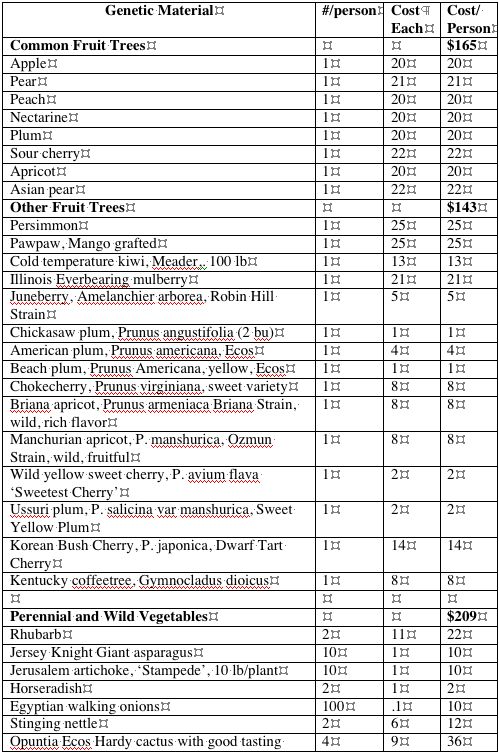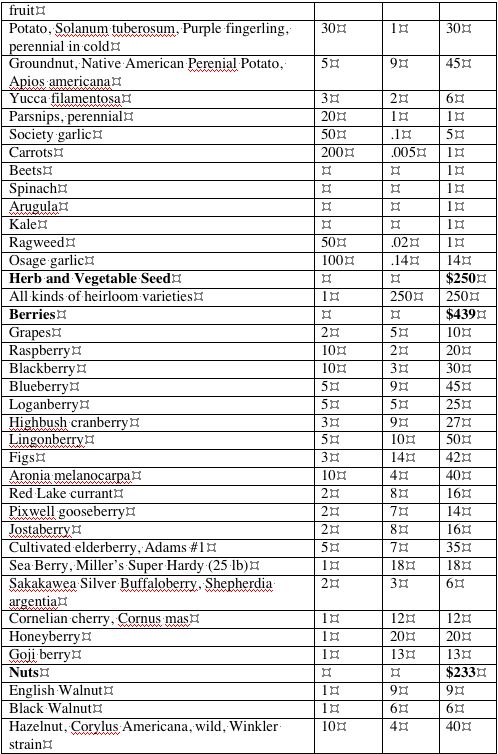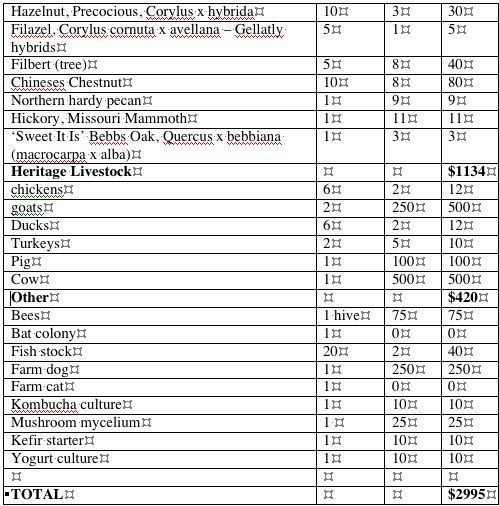Perennial Agriculture
2023 Addendum
- With pit greenhouses fueled by solar heat or waste heat, we can do tropicals indoors, such as oranges, avocado, banana, and others. Cost is high, but in a well-designed pit greenhouse or 3D printed structure, this can be lower cost than imports in the framework of an open source movement entrepreneurhip community.
Introduction
Here is a gene base for an integrated, permacultural landscape proposed for Factor e Farm. We are designing with the intent to replicate the same to future facilities - by propagation techniques.
It costs about $3k to acquire the listed genetic base per person. After the initial plantout and acquisition, the entire stock can be propagated. A business model for a Propagation Share should be developed here, and may take an establishment time of 5 or so years to come into play. Once a number of such facilities are available, however, replication can happen faster. This is like Heifer Projects International stock sharing - but not only for poor people.
Together with the Integrated Food and Waste Management System - we can create a healthy food system to replace the present disaster.
Further Information
We are looking for stewardship members for the open source community gene bank. Read more about it here.
Books
- Martin Crawford: "Creating a Forest Garden: Working with Nature to Grow Edible Crops" (released July 2010)
- Eric Toensmeier: "Perennial Vegetables: From Artichokes to Zuiki Taro, A Gardener's Guide to Over 100 Delicious and Easy to Grow Edibles"
- Dave Jacke "Edible Forest Gardens"; - Vol. 1 has theory plus Forest Gardening Top 100 species; Vol. 2 is the practice.
- Wildman Bill: Identifying and harvesting wild edible and medicinal plants in wild(and not so wild) (recommended by Blake C.)
- Solviva - on a year-round, integrated greenhouse - [1]. See Critique of Solviva.


